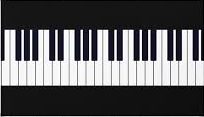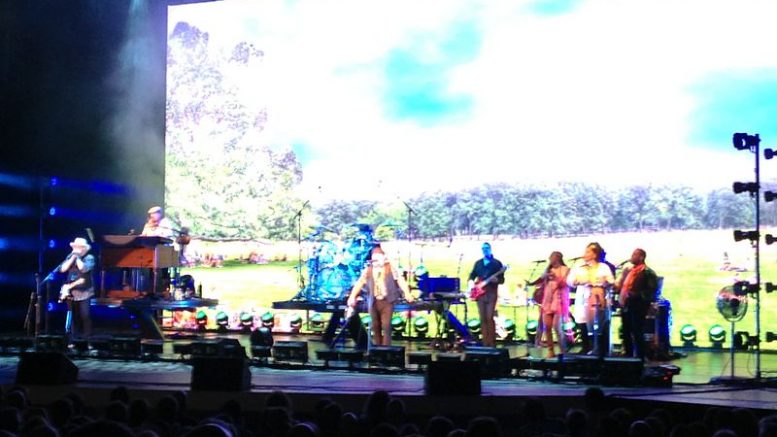The original purveyors of 1960s blue-eyed soul delivered the goods in Once Upon A Dream before a packed house at the Royal Alexandra Theatre.
The Rascals in their ’60s heyday: Eddie Brigati, Gene Cornish, Dino Danelli and Felix Cavaliere reunite on the Royal Alex stage in Once Upon a Dream.
Nick Krewen
Music,
SPECIAL TO THE STAR,
Published on Wed Aug 14 2013
The Rascals: Once Upon A Dream
3 stars
By Steven Van Zandt. Music and lyrics by Felix Cavaliere and Eddie Brigati. Directed and produced by Steven Van Zandt and Marc Brickman. Through Aug. 25 at the Royal Alexandra Theatre, 260 King St. W., 1-800-461-3333 or mirvish.com.
Forty years later and they’ve still got it.
The Rascals — and we’re talking the original New Jersey-born-and-bred purveyors of blue-eyed soul here — still have plenty of fire in their aging bellies.
Even more impressively, they can deliver the goods, as they demonstrated Tuesday night during an exhaustive two-hour performance before a packed house at the Royal Alex, the first evening of a two-week run designed to evoke memories and shine some light on one of the more underrated bands of the ’60s.
Although The Rascals certainly had their hits — ranging from their 1966 chart-topping rendition of “Good Lovin’,” first recorded by L.A. R&B novelty act The Olympics — to the self-penned good-time feel of “Groovin’” — and were respected for their high-calibre musicianship, the band never quite had the historical impact or influence of some of their contemporaries.
And Steven Van Zandt’s theatrical love letter to the band — a sort of a hybrid documentary/rock concert that features Felix Cavaliere, 70; Ottawa native Gene Cornish, 69; Eddie Brigati, 67 and Dino Danelli, 69, offering a scripted recounting of their history on a giant screen in between songs — doesn’t really offer any argument to the contrary.
All the proof you needed was evident in the extended set list itself: 28 songs that — with the exception of a few hits like “People Got to Be Free” and “How Can I Be Sure” — sailed over the heads of listeners in terms of familiarity, although they were certainly appreciative and willing to listen.
Occasionally there was a rendition of a Motown song, like Smokey Robinson’s “Mickey’s Monkey” or The Marvelettes’ “Too Many Fish in the Sea,” that placed the band’s legacy in proper perspective: on one hand, The Rascals played an important role in helping the mainstream audience discover R&B soul treasures of the time (although their omission of Mack Rice’s “Mustang Sally” — which later became a hit for Wilson Pickett at the band’s expense — is a glaring one).
On the other hand, The Rascals wrote some decent tunes — a handful of which made it to the Top 10, peaked around 1968, and explored themes of peace, love and understanding that sometimes took them into the psychedelic stratosphere, like many other voices of that era.
But maybe the real point here is the passion that The Rascals, together for the first time in four decades, have rediscovered during this temporary reunion.
As singers, the tandem of keyboardist Cavaliere and the dancing, tambourine-tapping Brigati sound ageless — even though their impact on Tuesday night was seriously hampered by a woefully inhibitive vocal mix that mercilessly devoured some of the soulful nuances both performers worked hard to execute.
Both were elated to be on stage, and their looks of elation echoed by guitarist Cornish, who couldn’t wipe the grin off his face as he delivered tasteful leads for numerous numbers or strummed the accompaniment.
Drummer Danelli was lost in his own world, making sure that every beat was implemented with dynamic precision. Five more musicians, including the prominent trio of veteran backing singers Sharon Bryant, Angela Clemmons and Dennis Collins, helped fill out the harmonies and The Rascals’ rhythmic sound.
We all bore witness to a band that, so many moons later, was still very much in love with their music and pretty much played it flawlessly, with the exception of an awkward and tricky passage of “How Can I Be Sure” that momentarily tripped them up.
For Van Zandt, Bruce Springsteen’s E-Street guitarist who once recruited Rascals drummer Danelli to fill the chair in his own solo excursion, Little Steven & The Disciples, this is as much a tribute to the character of his home state New Jersey as it is to The Rascals, as he helped profile some of the local music haunts that he certainly was familiar with as a Jersey kid.
The many flourishes he provided to visually and orally accompany the music were welcome additions: a narrative role from a well-known Sopranos actor; and a sometimes humorous script that, though full of sentiment, also occasionally laced the proceedings with a mild stench of Camembert.
However, the back screen projections that mix psychedelics with a peppering of ’60s film and TV references were accurate and entertaining supplements to The Rascals’ energetic performance, although the reconstructed bits of the band’s history played by younger actors felt too contrived.
For children of the ’60s, this excursion down memory lane was visually and sonically satisfying, a time machine that more often than not, successfully juxtaposed the present with the past.
Ultimately, the true value of The Rascals: Once Upon a Dream is realizing that you’re only as young as you feel: that even though time is fleeting, age is only a number.
And The Rascals’ number, as a solid performing entity, is far from up.
http://www.thestar.com/entertainment/music/2013/08/14/steven_van_zandt_and_the_rascals_rediscover_their_passion_review.html


Be the first to comment on "Steven Van Zandt and The Rascals rediscover their passion: review"